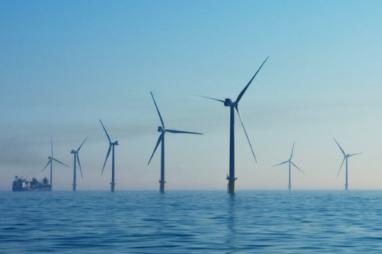
Energy build rate must urgently increase, warns AtkinsRéalis
AtkinsRéalis has published new forecasts of the required annual build rate of new energy generation to meet net zero targets and ensure security of supply.
The new Countdown to 2035 report warns the continued muted progress towards 2035 targets will create significant challenges in the UK’s ability to sufficiently scale up the construction and connection of new generation capacity to meet net zero targets and balance supply with forecast demand.
The build rate analysis acts as a benchmark to measure progress towards the UK’s 2035 goal of a net zero electricity system, with 187GW of new generating capacity required to replace ageing power plants and meet the increasing demand requirements fueled partly by greater electrification of transport and industry.
In 2019, AtkinsRéalis predicted a build rate of 10.5GW/year to achieve net zero electricity by 2050.
This jumped to 14GW by 2022 when more ambitious 2035 targets were introduced.
The new analysis predicts the UK must connect 15.5GW of new generating capacity each year to 2035 to meet system goals.
In contrast, just 4.5GW was connected to the national electricity grid in 2022.
The Countdown to 2035 report warns of the compound effect that will stem from continued shortfalls in build rate.
Exploring the impact of a more gradual increase is the most likely scenario until the UK hits ‘peak build rate’ or peak output - the highest volume of new generating capacity connected to the system each year – the report warns of unprecedented challenges within the next decade.
If the UK achieves a 15% increase in build rate year-on-year, the peak build rate would be 25GW/year by 2035 (roughly five times the 2022 rate and four times the UK’s current highest recorded build rate of 6.5GW in 2017).
However, if the build rate increases by just 10%, the required peak build rate would jump to 40GW/year by 2035 – the equivalent of 30 of the UK’s largest offshore wind farms in one year alone.
Sarah Long, market director for net zero energy at AtkinsRéalis, said: “From reforming the planning system and strengthening energy networks to bolstering the UK’s supply chain, a more gradual increase in new energy capacity is the most likely path to meeting net zero energy goals over the next decade.
“However, the scale of the challenge becomes greater each year: we must urgently shift from scenarios into delivery.
“The UK must maintain a laser-like focus on deployment and delivery of net zero generation and the energy infrastructure required to support it.
“That includes initiatives such as the Civil Nuclear Roadmap announced last week that lays out interim targets against long-term goals, encompasses support for new technology as well as proven large-scale projects and is an example of the type of framework that will help to provide long-term certainty to investors and boost the build rate”.
The report also explores the wider implications of delays in deploying low carbon generation onto the system, including the need to use greater volumes of unabated gas and the consequences that could have on both grid carbon intensity and the need to invest in the UK’s gas fleet to extend operational life and maintain security of supply.
Click here to read the full report.